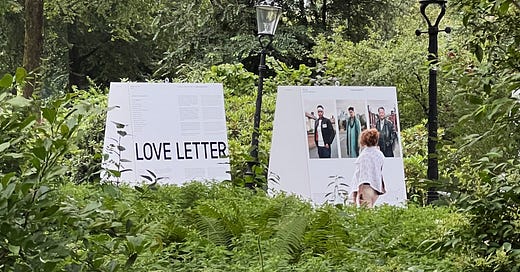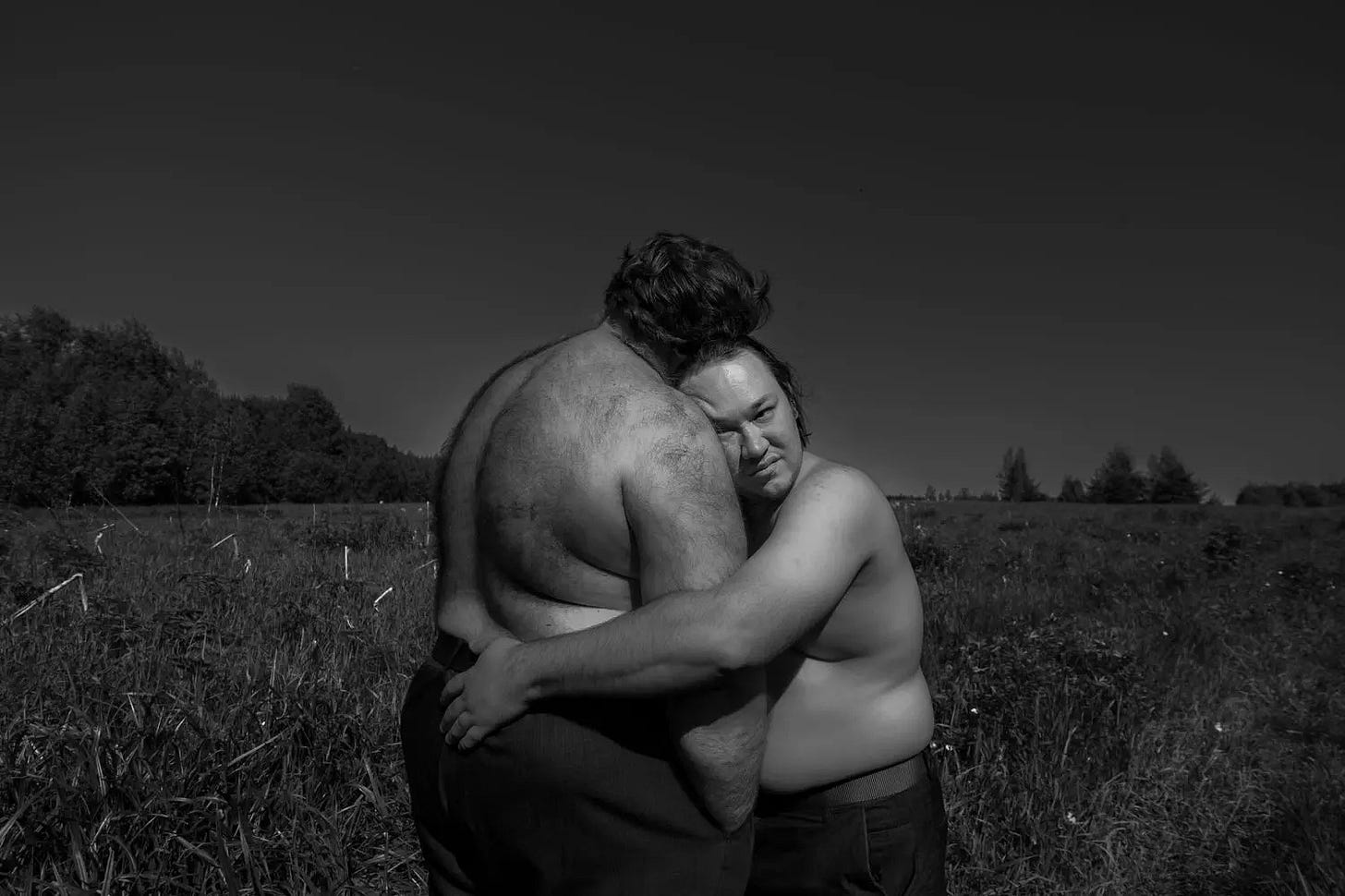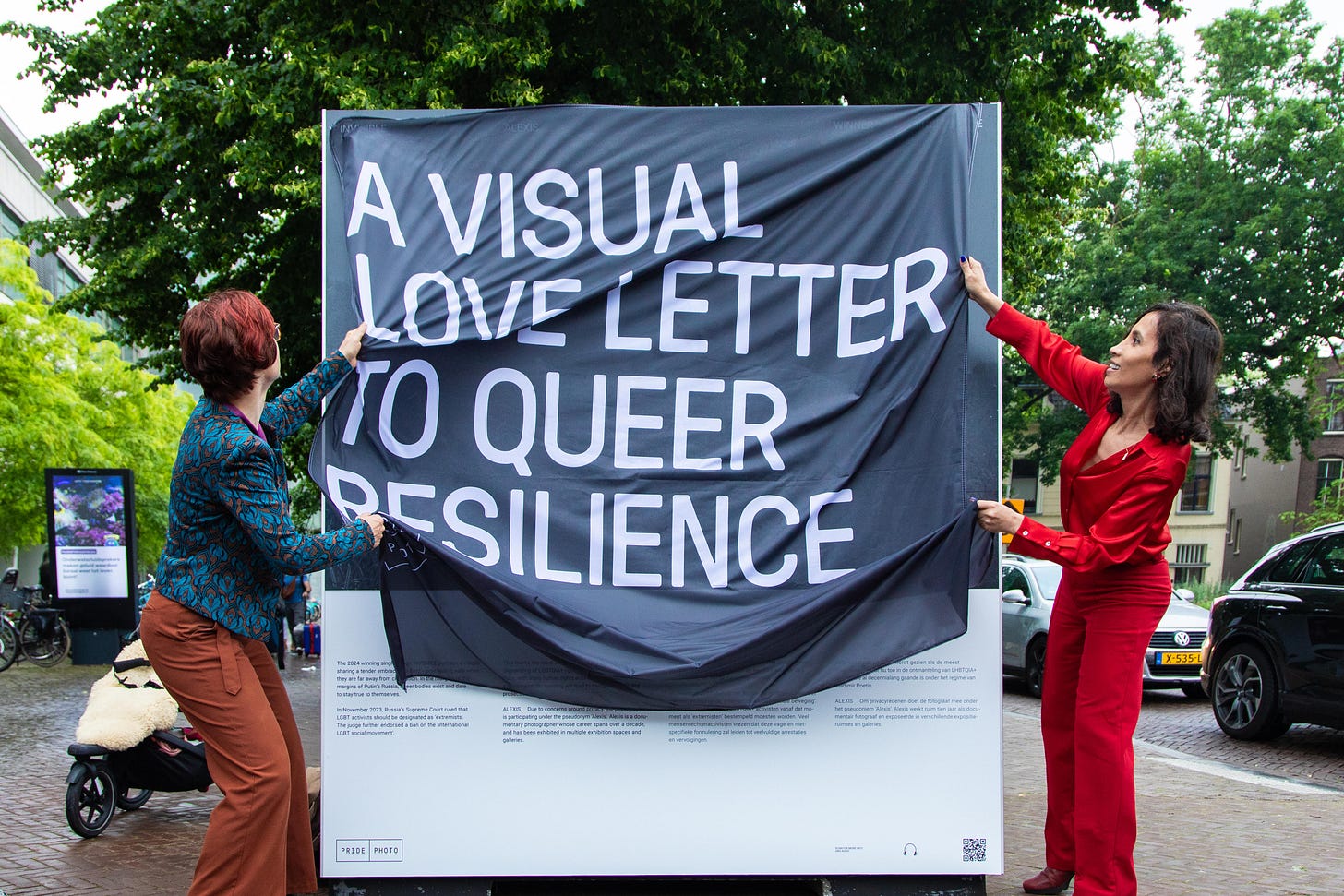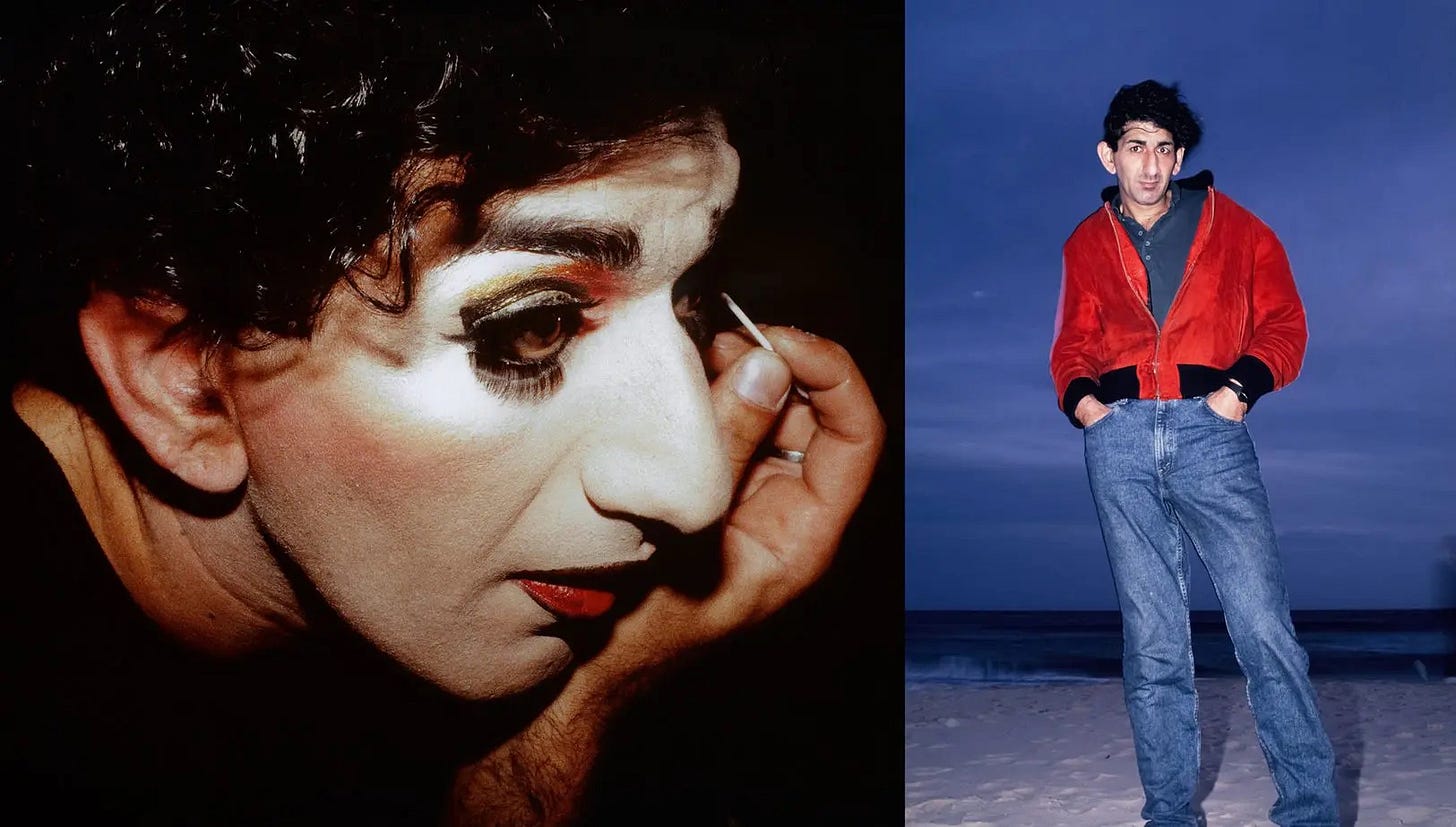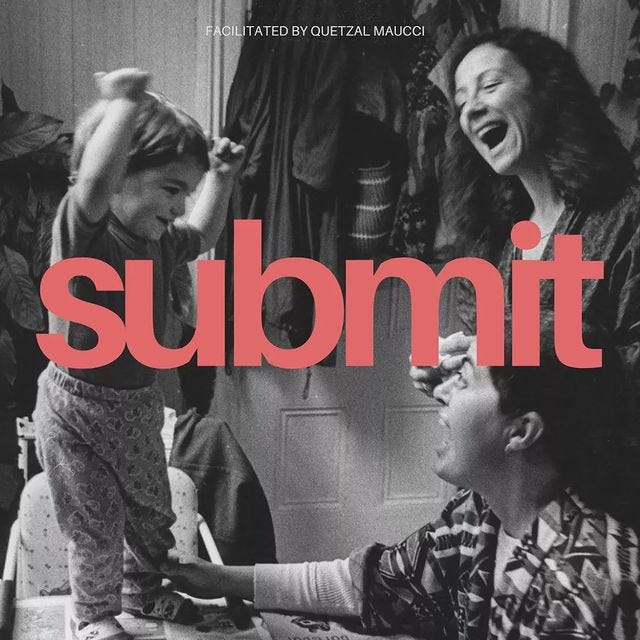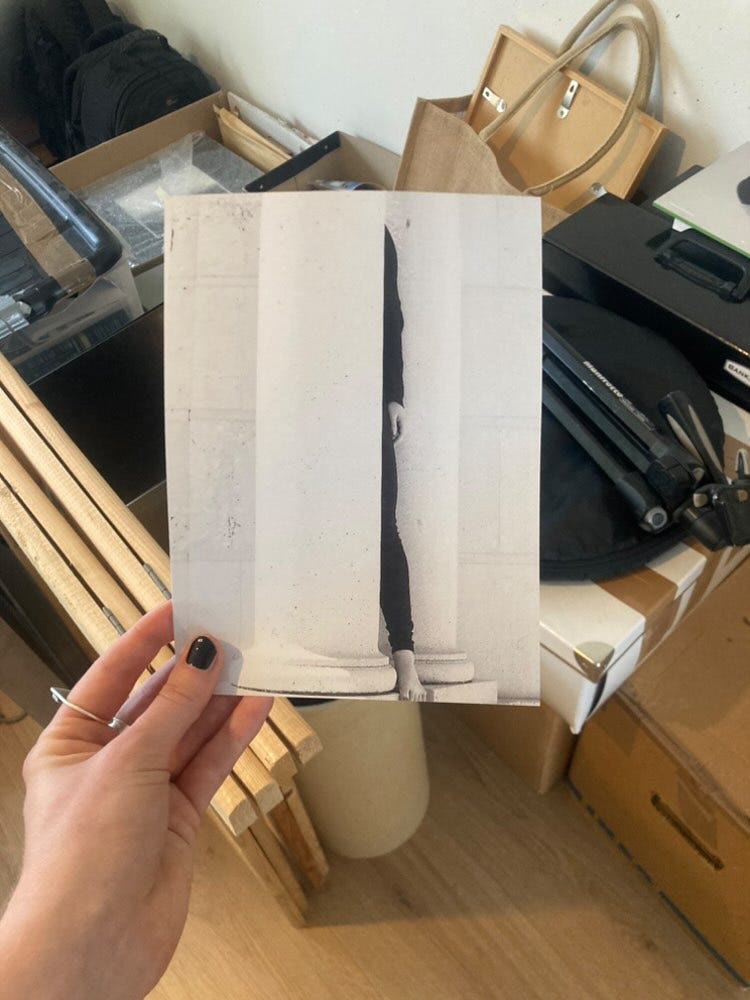A walk in the park...
...with Zindzi Zwietering, while we speak about curating for public spaces and love letters to queer resilience.
Welcome to dear midnight, my bi-weekly newsletter with reflections on all things photography, publishing and the artistic process.
Writing this newsletter has become a welcome exercise for reflecting on the materials that cross my path while working on personal projects or Foam Magazine. This week slightly delayed, but thank you for reading along, I hope you’ll find it inspiring! Please do feel free to share this with someone that would enjoy the read.
Let me start by digressing. I moved to The Netherlands one week before the first Covid-19 lockdown was set in place in 2020, which made it very difficult to connect with others in the beginning. For lack of better alternatives the park near my flat became my daily date, my excuse to get out and, if not meet, at least see other people. I can’t tell you how many walks I made, naps I took, coffees I drank and book pages I turned in Oosterpark. Time passed, and the world moved on to new challenges, but one thing remains: I still find comfort in the gaze of Paul Koning’s outdoor sculpture of a young person, generously smiling at everyone that passed since 1969.
As one of the few places that bring together people whom might not cross paths in everyday life, parks play an important role in the ecosystem of city life - especially in an increasingly polarised society. Like the living room of a neighbourhood they offer a spot to make your own, a place where public and private meet. Maybe more directly than museums and galleries, parks are places where art can become a catalyst for exchange and interconnection.
1: Catalyst
Pride Photo is an Amsterdam based non-profit organisation founded in 2010, which aims to celebrate, and create awareness around the multiplicity of LGBTQIA+ experience through photography and visual storytelling. I met up with Artist and Pride Photo Director Zindzi Zwietering in Oosterpark to hear more about this years edition, which recently launched on the streets of Utrecht and is now travelling across the country.
ZZ: Pride photo started as an indoor exhibition, but when corona hit, the previous director turned it into an outside display to be able to continue. Unfortunately, we had quite a lot of damage, like graffiti and complaints by angry people. What can be seen as provocative to some is considered the complete opposite by others. The demolishment made this very clear. I think it is important for art to provoke, but most of all you want to open up a conversation. Just this weekend I read that the number of reports of discrimination and violence against LGBTQIA+ people increased by nearly a quarter last year (from 2654 reports in 2022 to 3257 in 2023). I hope that our exhibition creates awareness, brings softness. Sometimes we receive emails from people that just say ’thank you’. In these moments I feel art can be so meaningful.
KH: Each year a newly selected independent jury of professionals in the field of photography are brought together as a panel to review the submissions of an open call. This year it consisted of Déborah Claire, Diego Moreno, Emma Waslander, Mohamad Abdouni and Alejandra Ortiz, who also curated the exhibition. Can you say more about this collaboration?
ZZ: Yes, Alejandra is an amazing activist, public speaker and trans woman from Mexico, who has also written two novels. The power of exhibitions like these lie so much in the stories behind the images, so to me it was more important to work with someone who knows about living a queer life, rather than having worked in the photography world. Alejandra is very personal in her activism, she really dares to tell her own life story over and over again, which I find really impressive. I think for her it's important that all the stories included in the exhibition are about resilience, making the exhibition an ode to the courage of expressing yourself as you are. Thinking of it as a love letter makes it very soft, but also very much relatable.
catalyst an event or person that causes great change
KH: Are there any threads that weave through the works?
ZZ: Almost all the projects are created over time, be that by working with a personal archive or with diary entries. The winning series by Julie Sundberg, for example, was made over a life span, in which she followed her best friends for 30 years.
KH: If we understand the park as the living room of a neighbourhood, does that make this exhibition the family album? Especially in a place like Amsterdam where the history of queer resilience and protest are anchored in the history of the city.
ZZ: Yes, I love that metaphor! They're all putting their diaries and personal stories out there, which I think is always a nice way to create that bridge to connect worlds. Personally, as an artist, I'm very much interested in going in a very conceptual or abstract place but most of the projects we're working with for Pride Photo have this directness in them which I think is needed in a public space. I think the park setting specifically is a really nice match with Cansu’s work which you probably know?
KH: Yes, Cansu is one of this year's Foam Talents. And you’re right, after engaging with their work you suddenly look at the park in a different way. Especially when thinking about the potential of the night, which is when most of the images were taken.
ZZ: I've been thinking a lot about how the Dutch landscape plays a role in the perception of the exhibition. Romans work for example is really about butches and studs in Britain and it's interesting for me to see this work in a different landscape.
I had this really nice conversation where we talked about how imagery is able to postpone judgement. This is how I experience photography as well and I really hope that other people or students will feel the same way after seeing the exhibition, wherever it may be.
KH: How would you describe the role of Pride Photo Award’s archive, and what are your plans with it?
ZZ: There's both a digital archive as well as the physical one and I think we would love to see how to make that more public and give it back to the community as a research place. I've been going through these archives more and more and it's really interesting to see how photography has shifted, and hopefully something in queer history has also shifted. There are many interesting exhibitions that could come out of that in the future.
KH: Can’t wait! Thank you Zindzi!
2: Family album
During an event organised by Pride Photo at Framer Framed I had the pleasure of being introduced to the work of photographer and lecturer Quetzal Maucci. Her body of work By The Time She Grows Up is a moving series that documents her personal family structure, having been raised in San Francisco in the 90s by two queer mothers from South America.
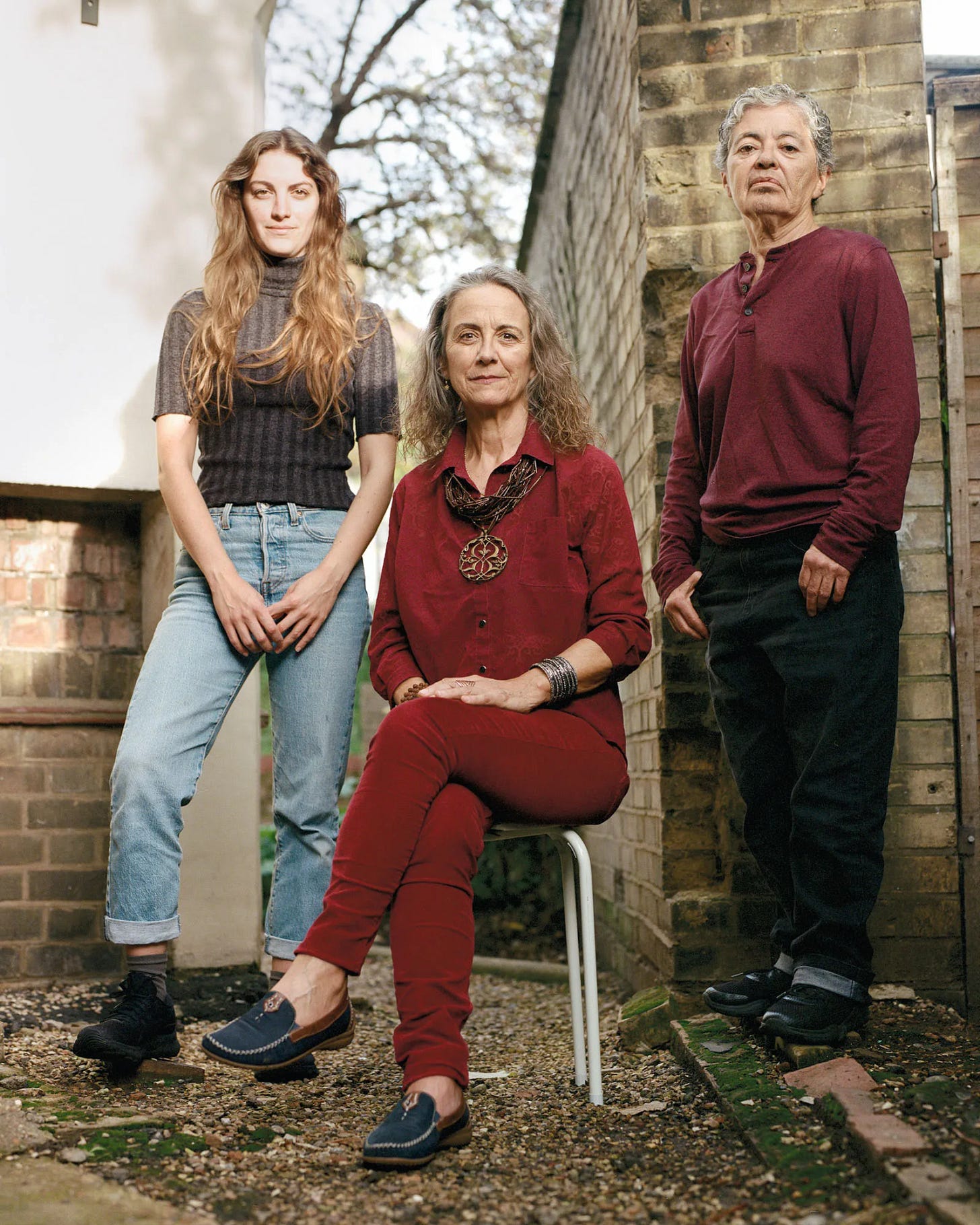
‘My family is not heteronormative or conventional. Still, we are a family. A family that is steeped in stories, challenges, joy, and differences. A family whose relationships transform over time. A family that keeps giving.’ Quetzal wrote in an essay for Time.
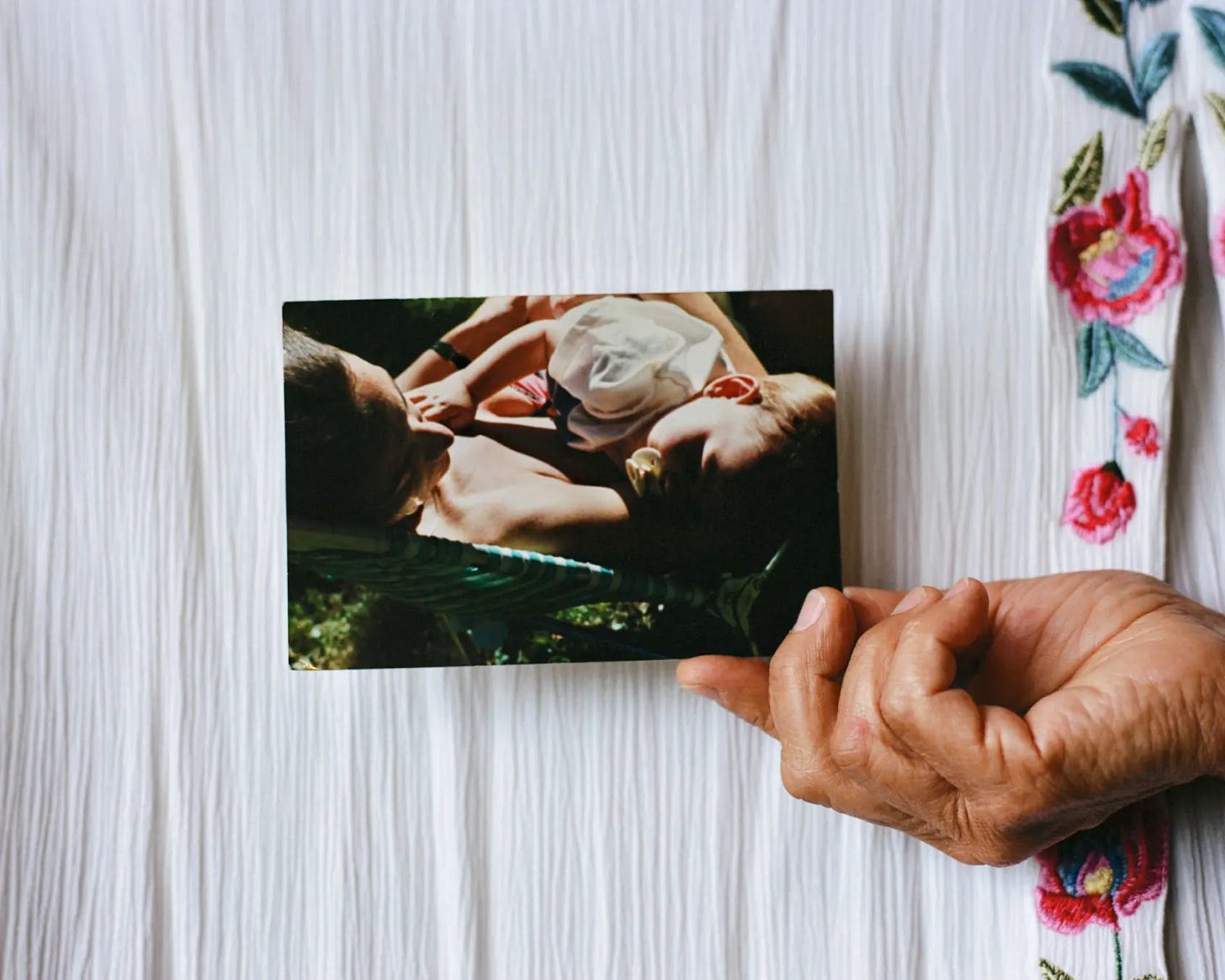
The work challenges the conventional representations that define what family looks like, creating an arch from the 90s until now. The title itself holds within it questions about the future, and at the same time, viewing from our present day perspective, an invitation to reflect on the status quo. How has the definition of family changed since then?
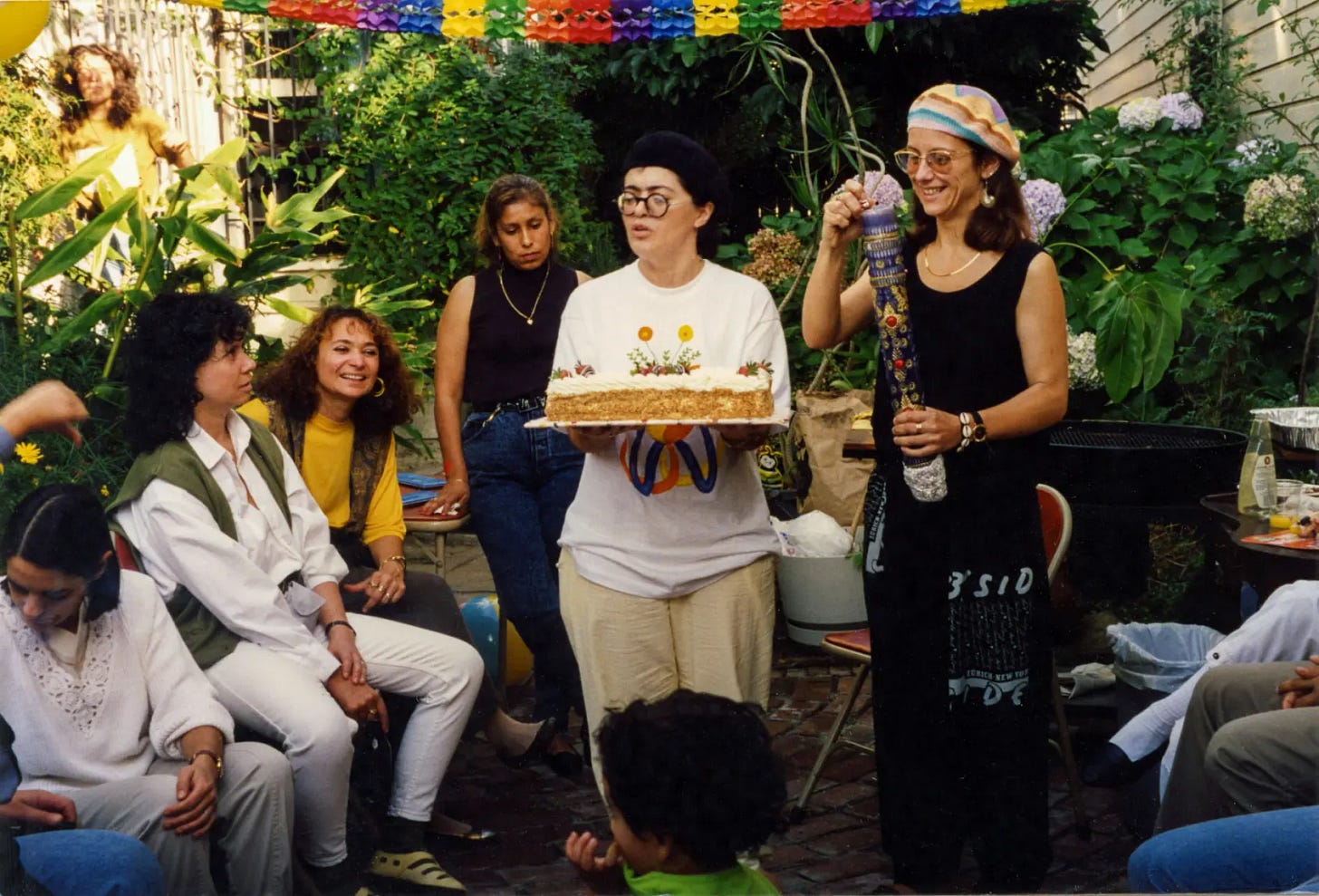
By starting an archive of queer family constellations Quetzal is taking the matter into her own hands and creating the representation that she missed growing up. As the archive grows and spreads it will continue to induce change, a shifting of opinions, towards the transformation of society’s image of family. So that by the time today’s children of queer parents grow up, there will hopefully be no questions or stigma left. You can read more about the project on her website, and submit an image and a written memory to the archive here.
4: From the studio
For the past years my own art practice has been somewhat on pause, or scattered between the boxes I’ve been carrying around with me. As you know I use this newsletter as a way to get back into the habit of writing about themes that interest me, move me, or make me stop and think. So far I’ve mostly shared snippets from older works of mine that resonated with those themes.
It has taken a while, but we finished renovations in the new place and I finally have a room that I can dedicate to my practice. I look forward to unpacking those boxes and slowly building new projects again. Will keep you posted!
If you’ve read this far, thank you and hope you enjoyed! My next letter will reach you at midnight around August 17th. Until then, take care.
x


